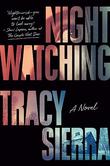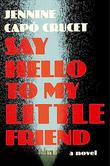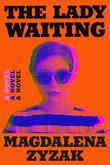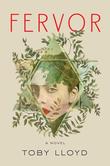
by Amy Tan ‧ RELEASE DATE: Oct. 18, 2005
A pity, because this vividly imagined tale might very well have been her best yet.
Tan’s ambitious fifth novel is a ghost’s story (though not a ghost story), about an American tourist party’s ordeal in the Southeast Asian jungles of Myanmar (formerly Burma).
Its narrator is Bibi Chen (whose relation to the story’s complex provenance is discussed in a brief prefatory note): a 60-ish California art collector/dealer and sometime travel guide, whose unexplained violent death limits her to joining the members of an American art tour “in spirit” only. She’s a major presence, however, among such varied traveling companions as Chinese-American matron Marlena Chu and her preadolescent daughter Esmé; biologist Roxanne Scarangello and her younger husband Dwight Massey (a behavioral psychologist); a florist who produces specially bred tropical plants and his teenaged son, an ardently liberal rich girl and her sexy lover, a gay designer pressed into service as de facto tour master, and several others—the most interesting of whom is TV celebrity dog-trainer Harry Bailley (who has eyes for Marlena, and whose name slyly alludes to that earlier portrayal of motley travelers who discover one another’s unbuttoned humanity: Chaucer’s Canterbury Tales). The strength here is Tan’s clever plot, which takes off when 11 of the dozen tourists (sans Harry, who’s ill) enter the jungle, cross a rope bridge that subsequently collapses and find themselves stranded among a “renegade ethnic tribe” who mistake 15-year-old Rupert Moffett for a “god” capable of rendering them invisible to Myanmar’s brutal military government. Their disappearance becomes an international cause célèbre, cultural misunderstandings entangle and multiply, and some fancy narrative footwork brings the tale to a richly ironic conclusion. Alas, Tan (The Bonesetter’s Daughter, 2001, etc.) offers much more—ongoing discursive commentary from Bibi’s post-mortem perspective, and scads of historical and ethnographic detail about Burma’s storied past and Myanmar’s savage present. The author’s research ultimately smothers her story and characters.
A pity, because this vividly imagined tale might very well have been her best yet.Pub Date: Oct. 18, 2005
ISBN: 0-399-15301-2
Page Count: 496
Publisher: Putnam
Review Posted Online: May 19, 2010
Kirkus Reviews Issue: Aug. 1, 2005
Share your opinion of this book
More by Amy Tan
BOOK REVIEW
BOOK REVIEW
by Amy Tan
BOOK REVIEW
by Amy Tan

by Claire Lombardo ‧ RELEASE DATE: June 25, 2019
Characters flip between bottomless self-regard and pitiless self-loathing while, as late as the second-to-last chapter, yet...
Four Chicago sisters anchor a sharp, sly family story of feminine guile and guilt.
Newcomer Lombardo brews all seven deadly sins into a fun and brimming tale of an unapologetically bougie couple and their unruly daughters. In the opening scene, Liza Sorenson, daughter No. 3, flirts with a groomsman at her sister’s wedding. “There’s four of you?” he asked. “What’s that like?” Her retort: “It’s a vast hormonal hellscape. A marathon of instability and hair products.” Thus begins a story bristling with a particular kind of female intel. When Wendy, the oldest, sets her sights on a mate, she “made sure she left her mark throughout his house—soy milk in the fridge, box of tampons under the sink, surreptitious spritzes of her Bulgari musk on the sheets.” Turbulent Wendy is the novel’s best character, exuding a delectable bratty-ness. The parents—Marilyn, all pluck and busy optimism, and David, a genial family doctor—strike their offspring as impossibly happy. Lombardo levels this vision by interspersing chapters of the Sorenson parents’ early lean times with chapters about their daughters’ wobbly forays into adulthood. The central story unfurls over a single event-choked year, begun by Wendy, who unlatches a closed adoption and springs on her family the boy her stuffy married sister, Violet, gave away 15 years earlier. (The sisters improbably kept David and Marilyn clueless with a phony study-abroad scheme.) Into this churn, Lombardo adds cancer, infidelity, a heart attack, another unplanned pregnancy, a stillbirth, and an office crush for David. Meanwhile, youngest daughter Grace perpetrates a whopper, and “every day the lie was growing like mold, furring her judgment.” The writing here is silky, if occasionally overwrought. Still, the deft touches—a neighborhood fundraiser for a Little Free Library, a Twilight character as erotic touchstone—delight. The class calibrations are divine even as the utter apolitical whiteness of the Sorenson world becomes hard to fathom.
Characters flip between bottomless self-regard and pitiless self-loathing while, as late as the second-to-last chapter, yet another pleasurable tendril of sisterly malice uncurls.Pub Date: June 25, 2019
ISBN: 978-0-385-54425-2
Page Count: 544
Publisher: Doubleday
Review Posted Online: March 3, 2019
Kirkus Reviews Issue: March 15, 2019
Share your opinion of this book
More About This Book
SEEN & HEARD

by Mark Z. Danielewski ‧ RELEASE DATE: March 6, 2000
The story's very ambiguity steadily feeds its mysteriousness and power, and Danielewski's mastery of postmodernist and...
An amazingly intricate and ambitious first novel - ten years in the making - that puts an engrossing new spin on the traditional haunted-house tale.
Texts within texts, preceded by intriguing introductory material and followed by 150 pages of appendices and related "documents" and photographs, tell the story of a mysterious old house in a Virginia suburb inhabited by esteemed photographer-filmmaker Will Navidson, his companion Karen Green (an ex-fashion model), and their young children Daisy and Chad. The record of their experiences therein is preserved in Will's film The Davidson Record - which is the subject of an unpublished manuscript left behind by a (possibly insane) old man, Frank Zampano - which falls into the possession of Johnny Truant, a drifter who has survived an abusive childhood and the perverse possessiveness of his mad mother (who is institutionalized). As Johnny reads Zampano's manuscript, he adds his own (autobiographical) annotations to the scholarly ones that already adorn and clutter the text (a trick perhaps influenced by David Foster Wallace's Infinite Jest) - and begins experiencing panic attacks and episodes of disorientation that echo with ominous precision the content of Davidson's film (their house's interior proves, "impossibly," to be larger than its exterior; previously unnoticed doors and corridors extend inward inexplicably, and swallow up or traumatize all who dare to "explore" their recesses). Danielewski skillfully manipulates the reader's expectations and fears, employing ingeniously skewed typography, and throwing out hints that the house's apparent malevolence may be related to the history of the Jamestown colony, or to Davidson's Pulitzer Prize-winning photograph of a dying Vietnamese child stalked by a waiting vulture. Or, as "some critics [have suggested,] the house's mutations reflect the psychology of anyone who enters it."
The story's very ambiguity steadily feeds its mysteriousness and power, and Danielewski's mastery of postmodernist and cinema-derived rhetoric up the ante continuously, and stunningly. One of the most impressive excursions into the supernatural in many a year.Pub Date: March 6, 2000
ISBN: 0-375-70376-4
Page Count: 704
Publisher: Pantheon
Review Posted Online: May 19, 2010
Kirkus Reviews Issue: Feb. 1, 2000
Share your opinion of this book
More by Mark Z. Danielewski
BOOK REVIEW
BOOK REVIEW
BOOK REVIEW
© Copyright 2024 Kirkus Media LLC. All Rights Reserved.
Hey there, book lover.
We’re glad you found a book that interests you!
We can’t wait for you to join Kirkus!
It’s free and takes less than 10 seconds!
Already have an account? Log in.
OR
Trouble signing in? Retrieve credentials.
Welcome Back!
OR
Trouble signing in? Retrieve credentials.
Don’t fret. We’ll find you.





